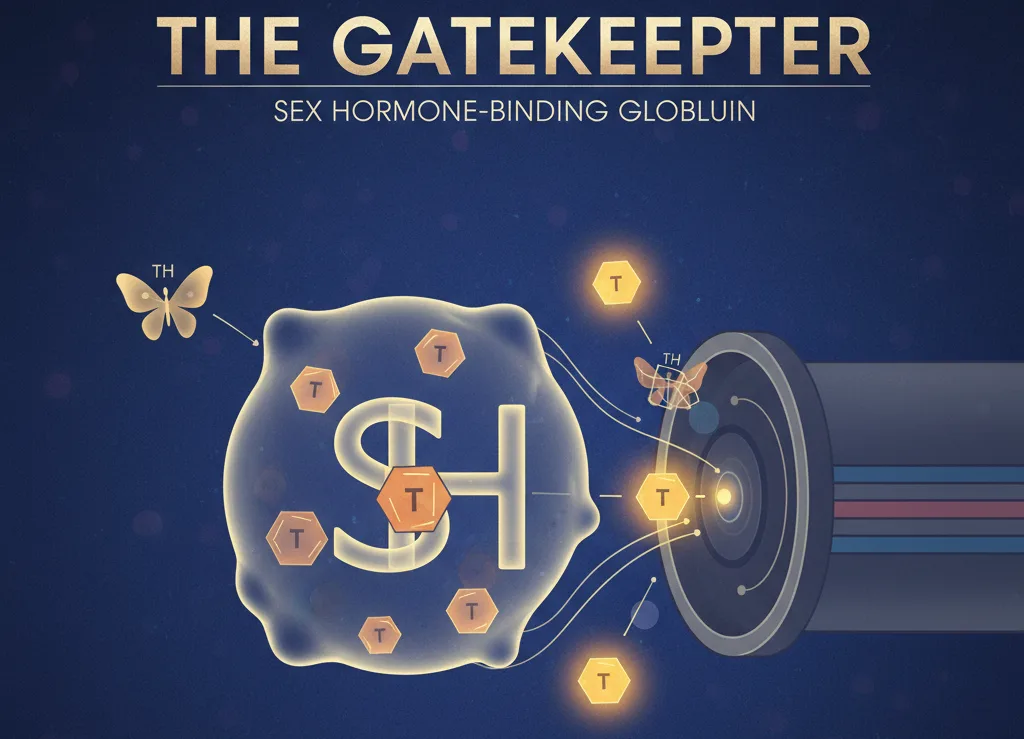In the intricate world of human physiology, hormones play a pivotal role in regulating countless bodily functions. However, the mere presence of a hormone doesn't guarantee its activity. A crucial protein called Sex Hormone-Binding Globulin (SHBG) acts as a gatekeeper, profoundly influencing the availability and efficacy of steroid hormones, particularly testosterone.
What is SHBG and How Does It Work?
SHBG is a hydrophilic, or "water-loving," protein produced primarily in the liver. Its main function is to bind to steroid hormones, which are typically hydrophobic ("water-fearing") molecules. Among these, testosterone is a prime candidate for SHBG binding.
When testosterone binds to SHBG, a critical transformation occurs:
-
Immobilization: The testosterone molecule, once bound to SHBG, can no longer freely diffuse across cell membranes. Cell membranes are largely composed of lipids (fats) and cholesterol, which hydrophobic steroids can normally navigate. However, the SHBG-testosterone complex is too large and hydrophilic to pass through.
-
Inaccessibility: Because it cannot enter the cell, the SHBG-bound testosterone cannot reach its target receptors, specifically the androgen receptors located within the cell's nucleus.
-
Lack of Effect: Consequently, the testosterone is unable to bind to these receptors and trigger its biological effects, such as muscle growth, libido, or other androgenic processes.
Essentially, SHBG acts like a transport vehicle that, while carrying testosterone, also keeps it sequestered and biologically inactive. Only "free" (unbound) testosterone is readily available to exert its effects on target tissues.
The Thyroid Connection: A Key Regulator of SHBG Levels
The levels of SHBG in the body are not static; they can be influenced by various factors, including other hormones. Recent scientific research, such as a study published in the Journal of Molecular Endocrinology in 2009 by Selva et al., has shed light on an important connection:
Thyroid hormones act indirectly to increase SHBG production by the liver. This process involves a specific pathway mediated by hepatocyte nuclear factor-4alpha.
This finding has significant implications:
-
Increased SHBG, Decreased Free Testosterone: When thyroid hormone levels rise, they stimulate the liver to produce more SHBG. More SHBG means more binding sites for testosterone, leading to a reduction in the amount of biologically active "free" testosterone.
-
Clinical Relevance: For individuals using exogenous testosterone or anabolic steroids, this interaction is particularly noteworthy. If thyroid hormone levels are elevated (e.g., due to hyperthyroidism or the use of thyroid medications), the increase in SHBG could potentially diminish the intended effects of the administered steroids by rendering a larger proportion of them inactive.
Practical Considerations
Given this interconnectedness, anyone managing their hormone levels, especially those on testosterone replacement therapy or using performance-enhancing substances, needs to consider the impact of thyroid function. Monitoring SHBG and thyroid hormone levels can provide a more complete picture of hormonal status and help optimize treatment strategies. Care must be taken to balance various hormonal systems to ensure desired outcomes and avoid unintended consequences.
In conclusion, SHBG is far more than a simple carrier protein; it's a critical modulator of steroid hormone activity. Understanding its function and how it's influenced by other hormones, such as those from the thyroid, is essential for appreciating the intricate balance of the endocrine system.
